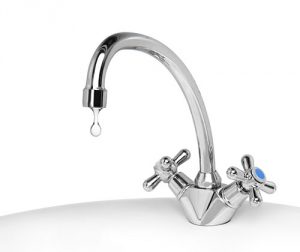
On the other end of the spectrum are stories that people believe to be false because they sound too preposterous to be true, and today we’re going to sort out fact from fiction with some common plumbing myths.
 Myth: Draining Water Means There’s No Clog
Myth: Draining Water Means There’s No Clog
What’s true: You can usually tell when a drain is clogged because it runs slowly or not at all, but a drain that’s running isn’t necessarily free of obstructions.
Other warning signs to look out for include toilets that gurgle when water is on somewhere else in the house, water that bubbles up from sinks or drains when the toilet is flushed and drains that don’t run as quickly as they should.
Myth: Water Heaters Can’t Explode
What’s true: The conditions have to be right, but it is entirely possible for water heaters to explode and blow through the roof of your house. The main cause is a malfunction with the temperature and pressure relief valve, which you should be testing every one to two months. Other causes include:
- Improper installation
- Poor or insufficient maintenance
- Missing safety controls
- Improperly adjusted temperature or pressure controls
Myth: You Don’t Have to Worry About a Leaky Faucet
What’s true: While a leaking faucet may be minor on the scale of possible plumbing problems, it can lead to thousands of gallons of wasted water and tons of money down the drain.
The average leak in a house results in a loss of 10,000-plus gallons of water every year, and fixing this could result in savings of 10 percent on your water bill.
Not certain if you have a leak? Check your water meter once every two hours when the water isn’t being used. If you notice an increase, there’s a leak somewhere.
The easy fix: Most leaks can be fixed by replacing the washer, replacing the gasket, tightening the connections, or wrapping connections with plumbing tape.
 Myth: Creatures Can’t Swim Up Your Pipes
Myth: Creatures Can’t Swim Up Your Pipes
What’s true: Although it is rare and only a few can do it, there are creatures that can swim their way through sewers and pipes to get where they want to go. Your major concern? Rats.
They’re good swimmers, they can squeeze through small spaces, and they’ll do almost anything to get to food—even if that includes finding their way from the sewer, into your pipes, and into your toilet bowl.
Another creature that’s very resilient and capable of finding its way into your house through the plumbing is the cockroach.
Myth: A Plunger Can Fix Any Clog, Great or Small
What’s true: Plungers are handy tools that every household should have, but they cannot fix every clog, every time. In fact, plungers are generally only designed to deal with small and loose clogs and are ineffective against larger and more stubborn blockages.
In those cases, you’re better off with a professional plumber or at least trying a drain auger or water ram first. Drain augers are inserted into pipes and physically break up clogs, while water rams use pressure to blow air and water through the pipes to remove clogs.
To book an appointment to have your water heater inspected or maintained, for help with a stubborn clog, or for more plumbing myth-busting tips, give Genmor Plumbing, Inc. a call at 408-215-4612. We’ve been serving the San Jose, CA area for years, and will be glad to count you as one of our valued clients.


 Myth: Draining Water Means There’s No Clog
Myth: Draining Water Means There’s No Clog
 Myth: Creatures Can’t Swim Up Your Pipes
Myth: Creatures Can’t Swim Up Your Pipes